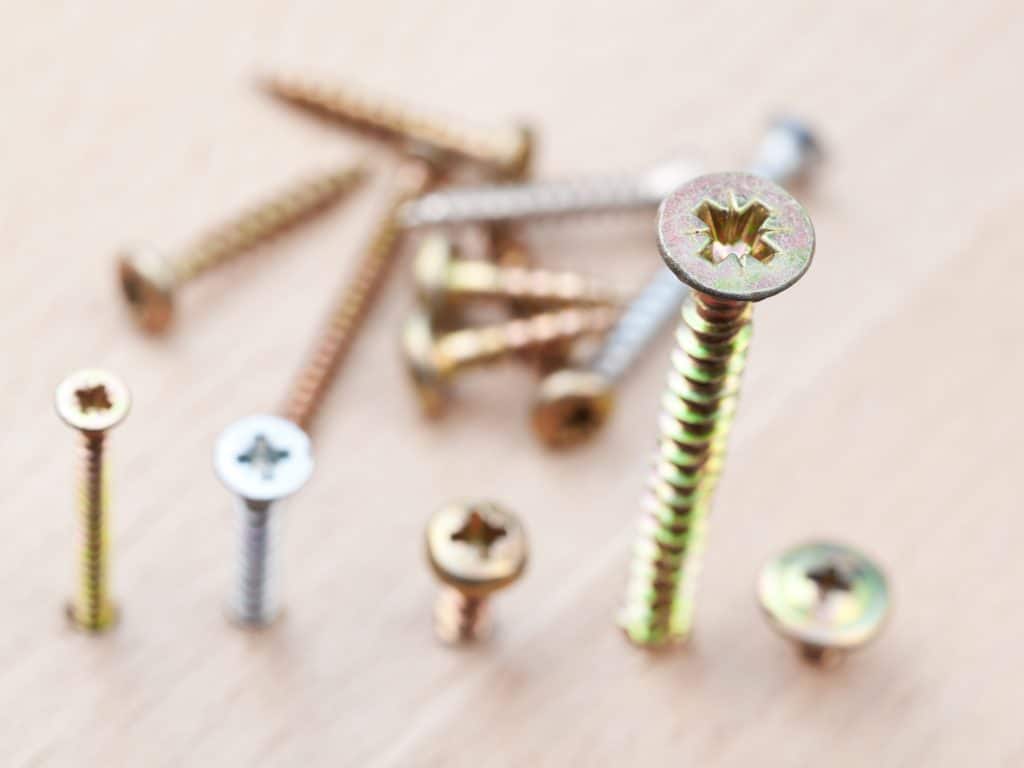
Anyone who performs wood screwing on a regular basis has probably wondered whether or not it was necessary to use a hand drill. After all, it does take more time to drag out a power tool than it does to grab a screwdriver out of the drawer. Wouldn’t it be easier to just do the job by hand?
When installing a screw, you don’t necessarily need a drill or power tool. Many jobs can be completed using only a hand held screwdriver. Even so, using an electric tool to insert screws can save time while giving you better results overall. This is particularly true if you are installing several screws or screwing into solid wood.
Ultimately, the decision as to whether you should use a power tool or not will depend on a number of factors. Here are some things to think about before you decide to use manual tools or an electronic apparatus.
Takes Longer to Complete
It is entirely possible to install wood screws using nothing but a hand-held screwdriver. However, if you have ever completed this task before you already know how tiring and cumbersome it can be. This may not be a problem if you are installing only one screw, but it can be exhausting if you need to place several of them.
It takes much longer to insert wood screws manually. What would take only a few seconds when operating a power tool can require several minutes if using a screwdriver. Your hand will also tire after placing only a few screws. As such, manual work is not suitable for very large projects.
Hard to Stay Straight
Inserting screws as straight and level as possible is also more difficult when you are doing the work by hand. You may find that your screw tilts to one side or another and becomes uneven. You may have to remove the screw and begin again if the screw becomes too far off course.
Can Cause Wood Damage
Excessive turning of the screw might result in a larger hole than necessary. As a result, the screw may not remain in place. Further repairs could be necessary in order to repair the opening left by your screwdriver. For example, you may need to fill in the hole with wood putty, or replace broken trim.
Screw Heads can Become Stripped
Another problem involves stripping the screw’s head. When that happens, you may find it harder to remove your screw should it becomes necessary to do so in the future. Even finishing a job can be hard to do if your screwdriver cannot grip the head properly. It can be difficult to insert or remove a screw if you are unable to get the right grip on it.
You are more likely to experience a stripped screw head when using a manual screwdriver rather than a power tool. That’s because screwdrivers have a tendency to slip, causing the grooves in the screw head to wear away.
Start Each Job with a Pilot Hole
Getting screws to go into wood can sometimes be a challenge all by itself. That’s why seasoned workers will often recommend tapping out a pilot hole first when installing screws by hand. This can done by using a hammer and very small nail to create a tiny hole in the wood. Or it’s even better to use a drill with a small bit to drill out a hole before screwing.
When screwing into hard wood, pilot holes not only help you keep the screw straight, but they also prevent the wood you’re screwing into from splitting.
After creating a pilot hole, the tip of your screw can then be inserted into it. This helps keep the screw in place while you are slowly turning the screwdriver or drill. Generally speaking, the longer your screw is, the deeper your pilot hole should be. Ideally, when you place the end of your screw into the pilot hole it should remain in place at least temporarily.
If you are using powered equipment, drilling a pilot hole isn’t necessary most of the time. This is another way in which electronic tools can help save you time. That said, when screwing into hard wood or fragile wood, a pilot hole will prevent splitting.
Pilot Holes Prevent Damage
I’ve mentioned this a few times already, but this is really important. Using a drill to make a pilot hole before screwing either with a screwdriver or power tool will prevent damage.
The pilot holes drilled into many pieces of ready-to-assemble furniture are designed to save you time as well as to prevent damage.
The vigorous cranking of manual screwdrivers can wreak havoc on very thin wood and veneer, leaving them more vulnerable to cracking. You won’t have to crank nearly as hard when your screw is already partly inserted. This means less chance of damage and a reduced risk of injury to your hands and fingers.
It also takes less time to create a pilot hole first and then insert a fastener than it does to try to completely insert your screw manually. Even if you are in a hurry, you should consider tapping out a pilot hole in your project first. You’ll become less frustrated and will be able to finish the job much sooner.
Occasions for Using a Screwdriver
We’ve already established that there are numerous advantages to using power tools; however, that does not mean that there are not times when using a screwdriver would be more advantageous. A few of those times include:
- When working with young children or inexperienced assistants. There is a greater risk of injury when using powered equipment, so hand tools might be a better option for safety purposes.
- During outdoor projects when there is water present. Power cords should never come into contact with water as there is an increased risk of electrocution. The battery in a rechargeable device might also become damaged if allowed to get wet.
- When inserting very small or non-standard sized screws. Most drill bits cannot accommodate these types of screws.
- Any time that carrying or recharging an electronic tool does not seem practical.
- On occasions when you want to hone your carpentry skills.
- Whenever you do not have the right safety equipment for the job, or when wearing it would not be practical.
When to Use a Power Tool
Although it is sometimes best to use a screwdriver, certain instances nonetheless call for power tools. You may want to use electronic tools when:
- Working with very hard species of wood. The harder the specimen, the more difficult it will be to insert a screw manually.
- Very long screws are needed to get the job done. The longer the screw, the more time it will take to fully insert it.
- You need to install several screws in a short amount of time. Using an electronic tool will help you become more efficient.
- Manual dexterity issues prevent you from firmly gripping a screwdriver.
- You are working with very delicate pieces of wood and would like to mitigate the risk of damage. An example would be when making repairs to antique furniture.
- Completing a very large project involving multiple-sized screws.
- Precision is of the utmost importance. You can install screws more accurately with a power tool than you can with a screwdriver.
Do you Need a Drill to Install a Screw?
It is entirely possible to install screws the old fashioned way using nothing more than a handheld screwdriver. In fact, many people prefer doing it that way because it provides them with a sense of satisfaction. Others would rather use a power tool even when inserting only a single screw.
Either method can get the job done, so the method you use is entirely up to you.

